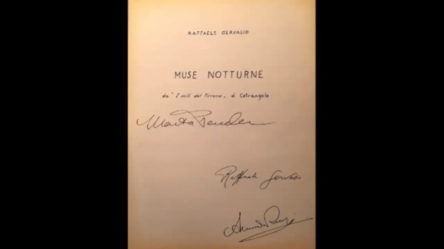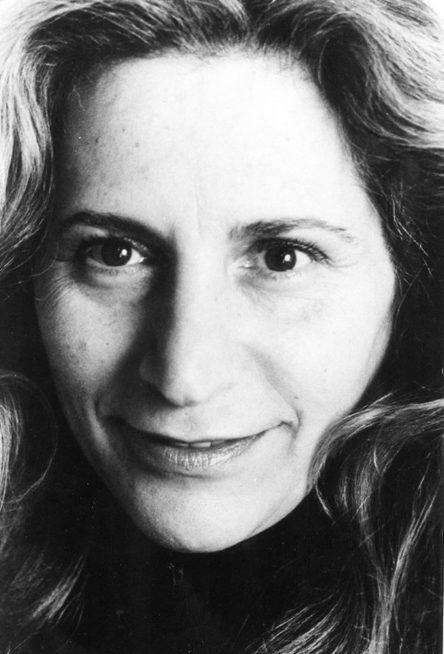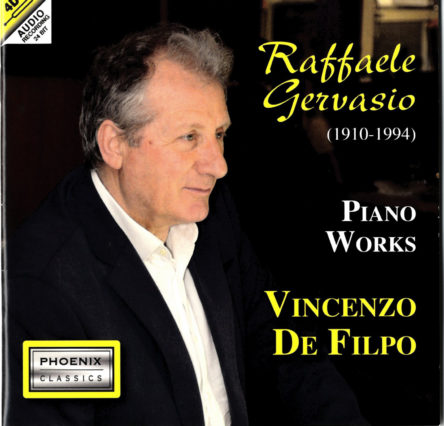The Sixties. The “Return to Pure Music”
DOSSIER
1960 was a turning point in Gervasio’s life; after leaving his twenty-year commitment to INCOM (Industria Corti Metraggi [Short Films Industry]), Gervasio decided to “officially devote himself to ‘pure’ music” which, despite the intensity and variety of his activities in various fields, he did not neglect in the fifties, as evinced by the composition and performance of two of his symphonies in 1955.
The period from 1960 to 1970 was particularly fruitful and rich with important works. It begins with the Concerto spiritualefor choir, viola, organ, and harps, which Gervasio wrote in 1961, and dedicated to his recently deceased father. Together with its Variazioni sul tema del Dies Irae for organ were then the focus of numerous performances.
Three particularly important works were written in this decade. Gervasio considers them to be his “violin triptych”, namely Preludio e allegro concertante, written in 1962; Concerto per violino e orchestra, written in 1966; and Composizione in la, written in 1968. The triptych is subject of a specific dossier.
Alongside these compositions, Gervasio’s artistic production was also nourished through the relationship with numerous musicians and authors. Three works for voice and instruments were born from his liaison with Angelo Romanò and Ezio Cetrangolo, authors of the texts, and with Giorgio Vigolo, translator of Aristotle on this occasion, Canzonette amorose (1961), Muse notturne (1965), and Detti di Aristotele (1967). Muse notturne in particular was written at the request of Domenico Ceccarossi:
«Writing for Ceccarossi I was more than authorized to treat the horn to the limit of its possibilities, gratifying the soloist with a wide range of timbre choices (echo, natural, mixed, muted, etc.).»
At the end of this decade there are two other significant works: Fantasia (1970) for piano, written at the request of Rudolf Firkusny, and Logos (1969) for orchestra.
During the concert dedicated to Raffaele Gervasio from the Camerata Musicale Barese in 1990, the pianist Maria Lucrezia Pedote who was about to perform presented Fantasiato the public:
«We can say that Fantasia is the most sophisticated piece of the evening, the piece most committed to discovering the new relationships between sounds of Gervasio’s entire artistic life. [...] a kind of deep excavation into the world of harmonies, in which, except for the finale, there is not a single traditional chord. [...] It is built as a semicircle: it begins at a very modest sound regime then slowly rises, it reaches an incandescent area to eventually return to the same beginning atmosphere. This is the shape that the sound trend describes, the rest is fantasy.»
Having just finished the composition of Logos Gervasio notes:
«It is undoubtedly the best thing I have ever written, due so I believe to its iron unity of elements, inspiration, and style. I would add that I was able to do just what I had in mind. And I am thinking above all of the ending, which is slow and expressive, with a secret theme of Kant (my consciousness in me, the starry universe above me ...).»
He talks again about Logos in the first of the two radio broadcasts Quale Musicaedited by Pierfranco Moliterni for the Puglia regional branch of RAI [Radiotelevisone Italiana], broadcast on 18 December 1979:
«Logos for orchestra is much more recent. More recent and more tormented, more tense, in living those problems of language that none of us musicians can ignore. I have written a good deal of serial music like Logos based on a series of twelve notes that cement the composition.»
1965
1969
Logos
I Movimento [Deciso], Orchestra sinfonica della RAI diretta da Fernando Previtali
1969
Logos
IV Movimento [Calmo], Orchestra sinfonica della RAI diretta da Fernando Previtali


